
Peach pest
Peach pest
1. Aromia bungii (Faldermann)
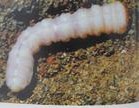
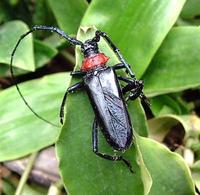
Through larvae boring, the pest can cause hollow branches, weak growth, small and yellow leaves, and even death of the whole plant.
Characteristics of occurrence: One generation occurs every 2-3 years. The larvae overwinter in the decaying branches. Adults occur from May to August, with a lifespan of about 10 days. After emergence, the adults stay in the drill ways for 3 to 5 days, then come out of the tree and lay eggs in bark crevices. The eggs hatch into larvae after 8-12 days. The newly hatched larvae eat in the subcortex, and gradually bore into the subcutaneous between phloem and xylem as the larvae grows, and then bore into the xylem when it grows to 30mm. The larvae mostly eat from top to bottom, and bore into curved and irregular drill ways in the trunk. There is often a large amount of dung outside the cavities and on the ground.
Prevention and control measures:
① During the adult stage, artificial capture measures can be taken. Kill the larvae with wire through the defecation hole.
② Chemical control: Brush the tree trunks with white coating of lime and sulfur to prevent the adults from laying eggs; Apply Dichlorvos 80% EC diluent to defecation holes; Use a steel nail with a diameter of 4-5 mm to make a hole in the trunk at a distance of 50-80 cm from the ground, with a depth of about 3-4 cm. After pulling out the nail, inject the long-acting trunk injection with a veterinary syringe.
2. Dichocrocis punetiferalis (Guenée)
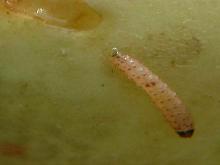
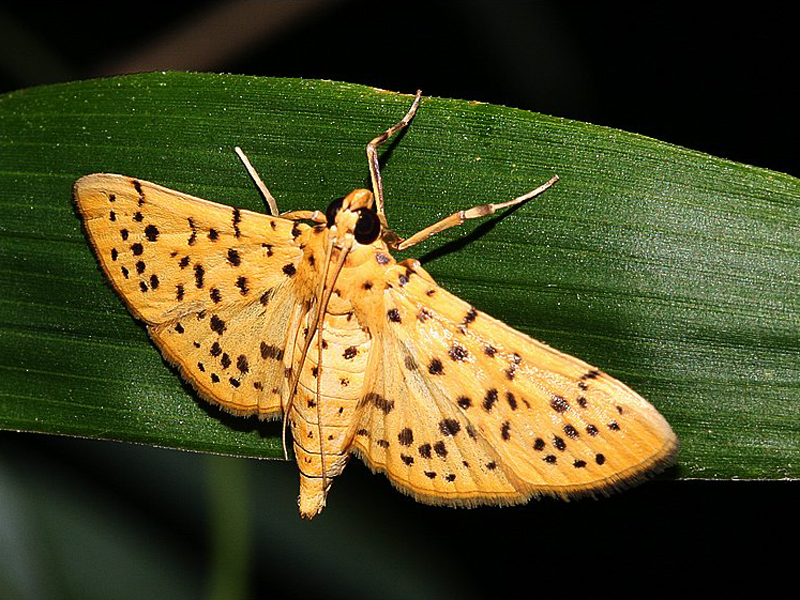
The insect larvae eat fruits and seeds that cause fruit to rot and fall prematurely.
Characteristics of occurrence: 4-5 generations occur a year. The old larvae overwinter by forming cocoons in rough bark crevices. The peak period of overwintering adults is mid-to-late May. Adults are nocturnal and they have a strong tendency to black light and sugar, wine and vinegar liquid. They like to eat nectar and drink fruit juice of mature peaches. Adults like to lay eggs on fruits with dense branches and leaves or at the joint of fruits. The newly hatched larvae eat the fruit stem and pedicle first. After peeling, the larvae bore into the fruit heart from the pedicle base and eat the tender kernel and pulp. The larvae have the habit of turning fruit, and when mature, they spin cocoons and pupate in the fruit, between the fruit and on bourse.
Prevention and control measures:
① Remove old warped bark from peach trees before germination in early spring. Remove damaged fruit in time.
② Use black light to trap and kill adults.
③ Chemical control: Apply from egg hatching peak to young larva stage. Pesticides generally include Diflubenzuron 20% SC, Fenvalerate 20% EC, Chlorpyrifos 45% EC. Insecticides in other mechanisms are recommended to use by turns to delay resistance.
3. Tettigella viridis (Linnaeus)
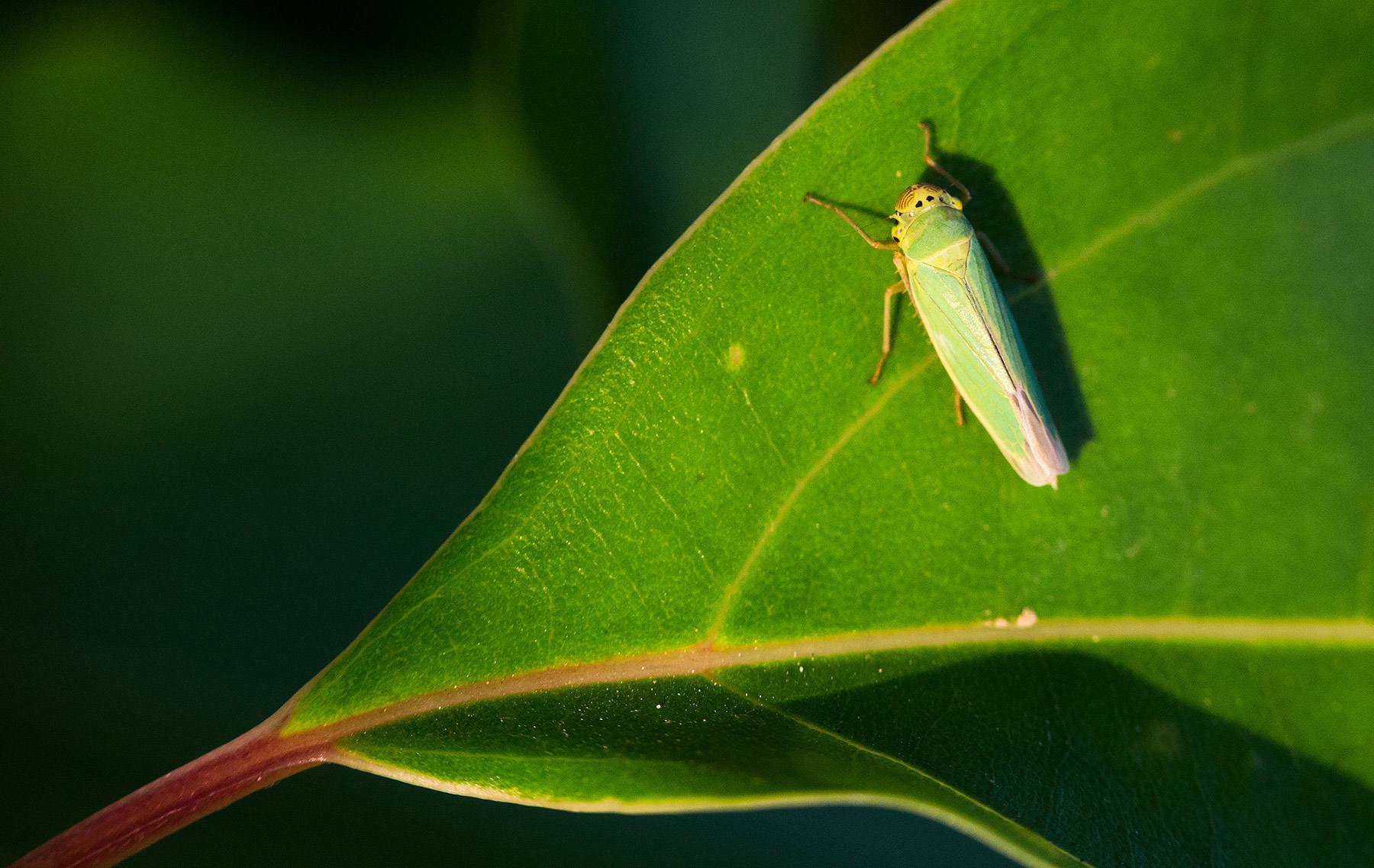
This insect pest mainly damages leaves, causing the leaves to fade, deform, curl, and even the whole leaf die. In addition, it can spread viral diseases.
Characteristics of occurrence: 2-5 generations occur a year. The eggs overwinter under the epidermis of tree branches. The newly hatched nymphs are gregarious, good at jumping, and can move and eat day and night. Adults have phototaxis, which are quite strong in summer and not obvious in late autumn. Adults lay eggs in the epidermis of host plant stems, petioles, main veins, branches and other parts by ovipositors.
Prevention and control measures:
① Remove orchard weeds in time.
② Set up lights to trap and kill adults.
③ Chemical control: Brush the tree trunks with white coating to prevent the adults from laying eggs. When the number of adults is large, apply Bifenthrin 10%+ Clothianidin 10% SC or Bifenthrin 5%+ Clothianidin 10% SC before spawning. Spray once every 10 days, 2 to 3 times in a row.
4. Hyalopterus amygdali (Blanchard)
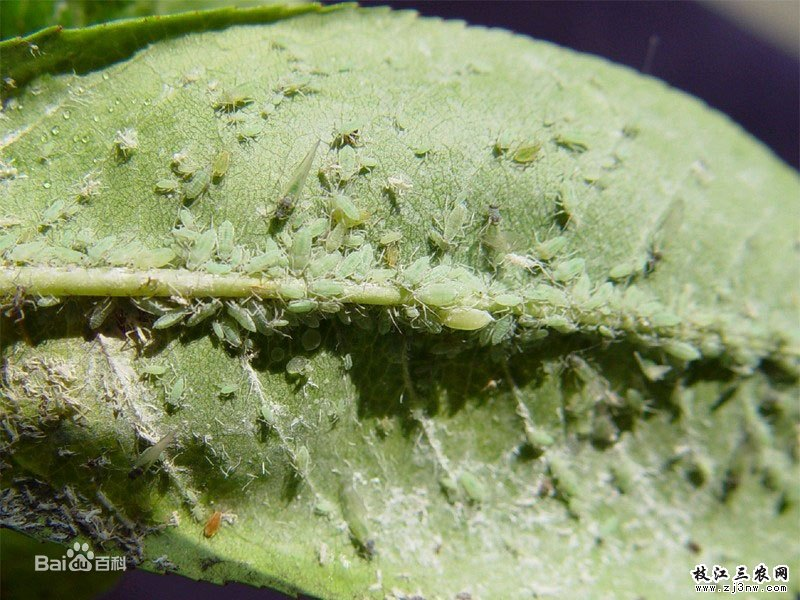
Adults and nymphs gather on the back of the leaves to suck the sap, and the two edges of the damaged leaves roll lengthwise toward the back of the leaves. White wax powder is accumulated in the rolled leaves. In severe cases, the leaves fall prematurely and the tender shoots dry up.
Characteristics of occurrence: 10-20 generations occur a year. Eggs overwinter in the bud axils, cracks and short branches of peach trees and other winter hosts. The eggs hatch when the winter hosts germinate, and the newly hatched nymphs cluster in the tender shoots and the back of the leaves to harm and reproduce. From May to June, a large number of winged viviparous female aphids are reproduced, and they migrate to the summer hosts to harm and reproduce. From October to November, the winged aphids are reproduced and return to the winter hosts to harm and reproduce, producing sexual aphids to mate and lay eggs for overwintering.
Prevention and control measures:
① When the number of aphids is small in spring, cutting off the damaged shoots in time can effectively control the spread, which is suitable for young tree gardens.
② Natural enemies such as ladybugs, lacewings, hoverflies and parasitic wasps have a certain inhibitory effect on the occurrence of aphids.
③ Chemical control: Imidacloprid 10% WP, Acetamiprid 50% WG, Flonicamid 20% SC or Sulfoxaflor 22% SC.
5. Postosia brevitarsis (Lewis)
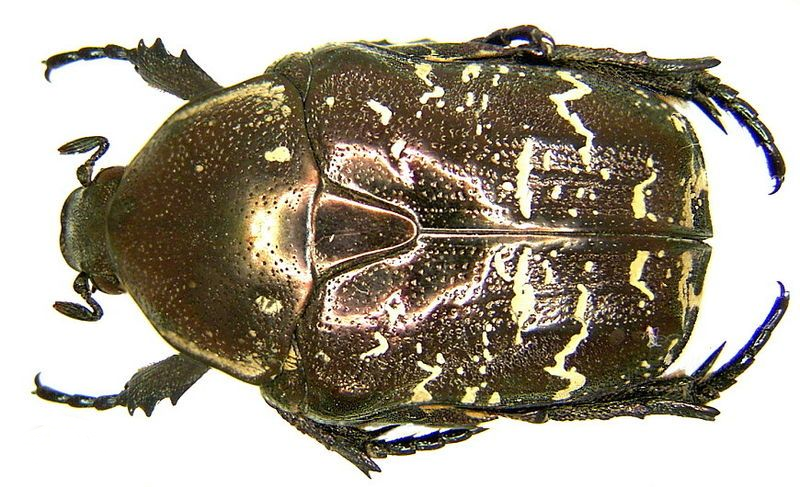
This insect pest mainly damages young leaves, buds, flowers and fruits, causing the flowers and fruits to fall off. They especially like to eat rotten fruit.
Characteristics of occurrence: One generation occurs a year. The larvae overwinter in the soil. Adults appear in early May, and the peak period of occurrence is from June to July. They have a tendency to fruit fruitjuice, sugar and vinegar liquid, and have the characteristics of feigndeath. After being disturbed, they would fly away or fall. Adults damage corollas during the day, causing the flowers to fall off. In July, the adults gradually turn to the fruits, causing pitted and rotten fruits.
Prevention and control measures:
① Taking advantage of the cluster habit of adults, carry out artificial capture when the adults damage the fruits or hang canned jars with rotten apples or peaches on the tree to attract adults. Sugar and vinegar bottles can also be used.
② Chemical control: Apply Trichlorfon 90% SP during adult stage.